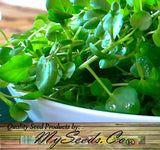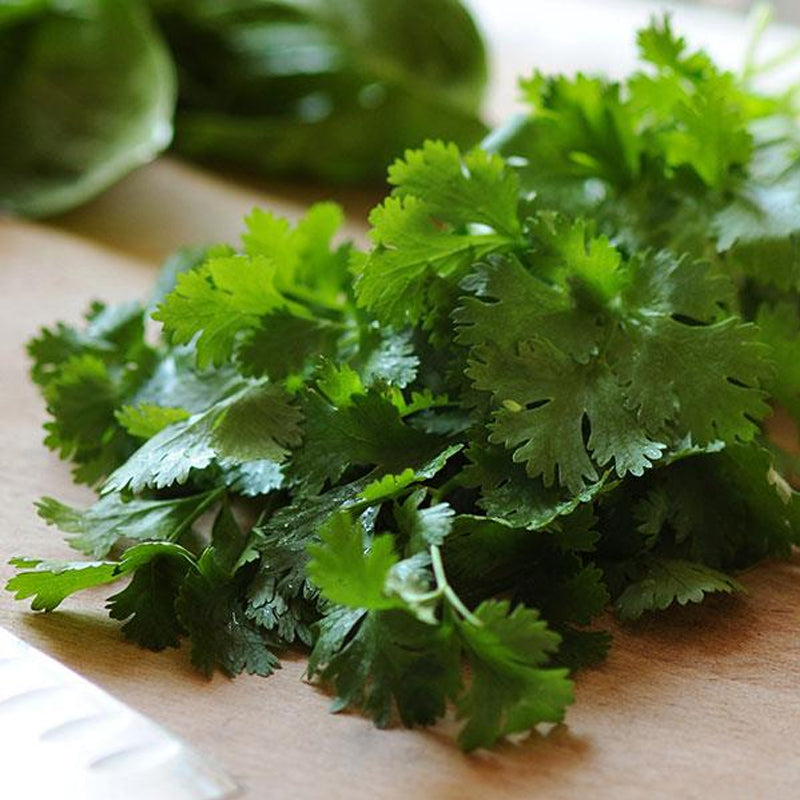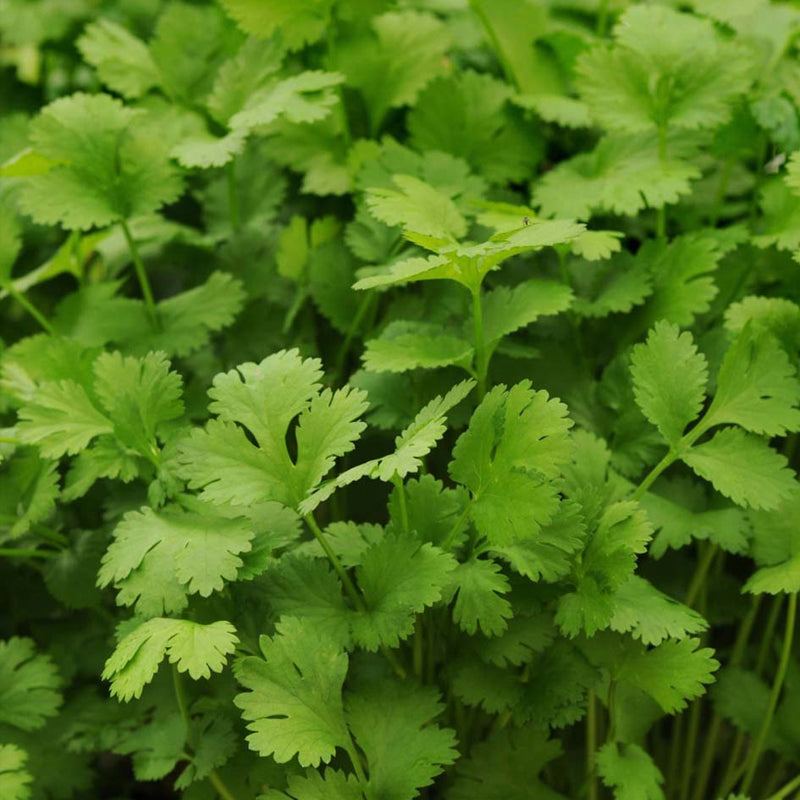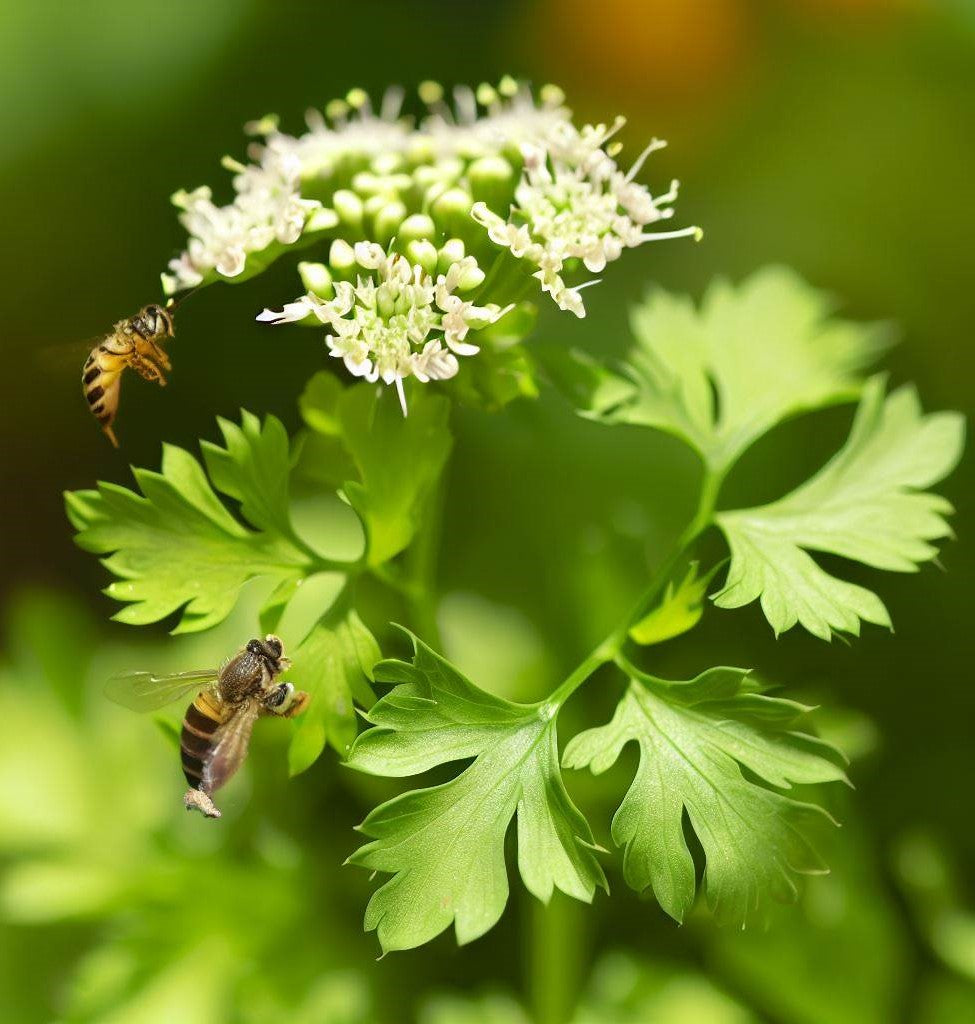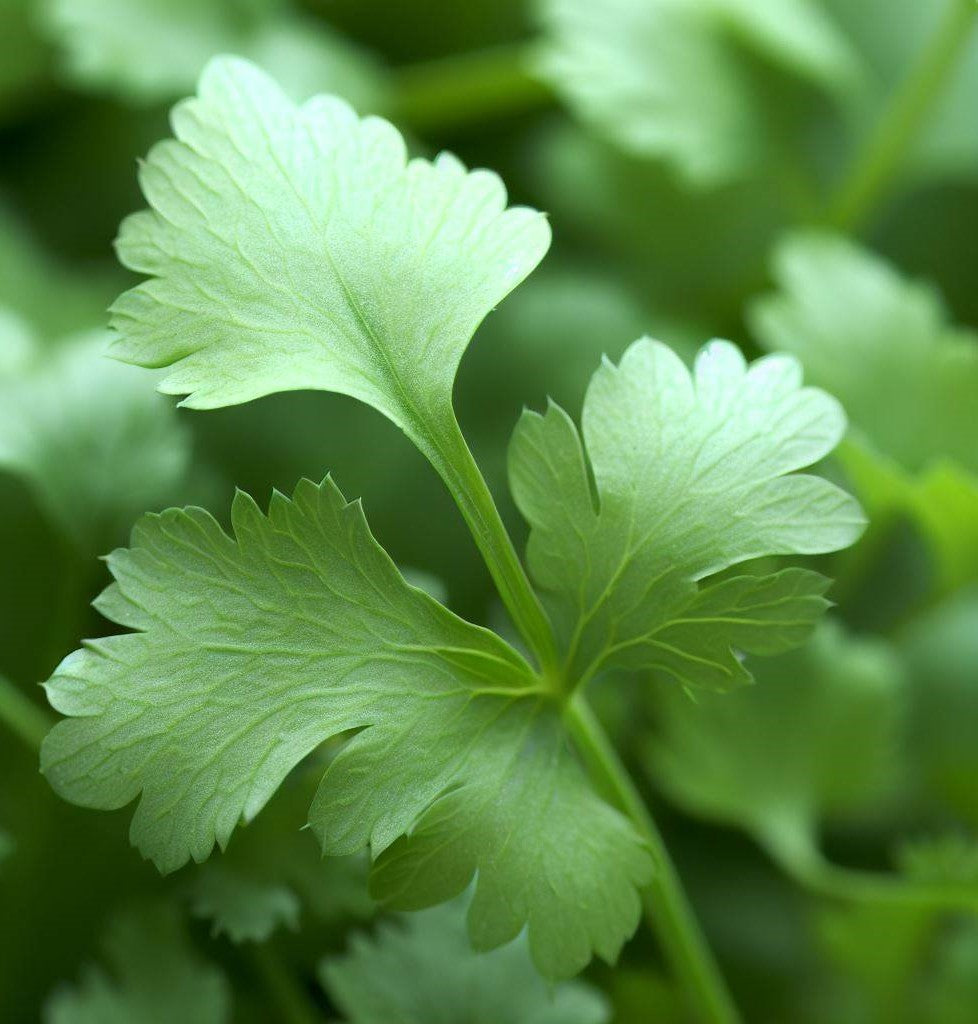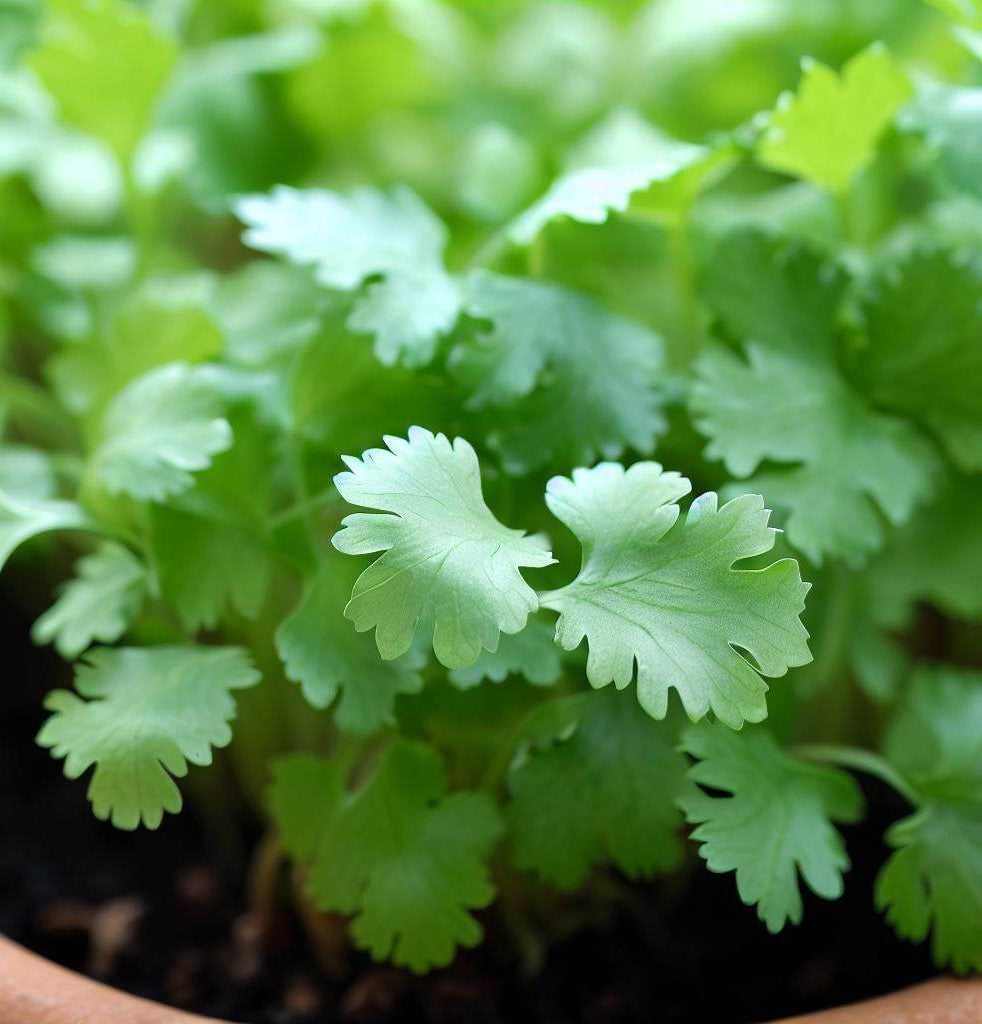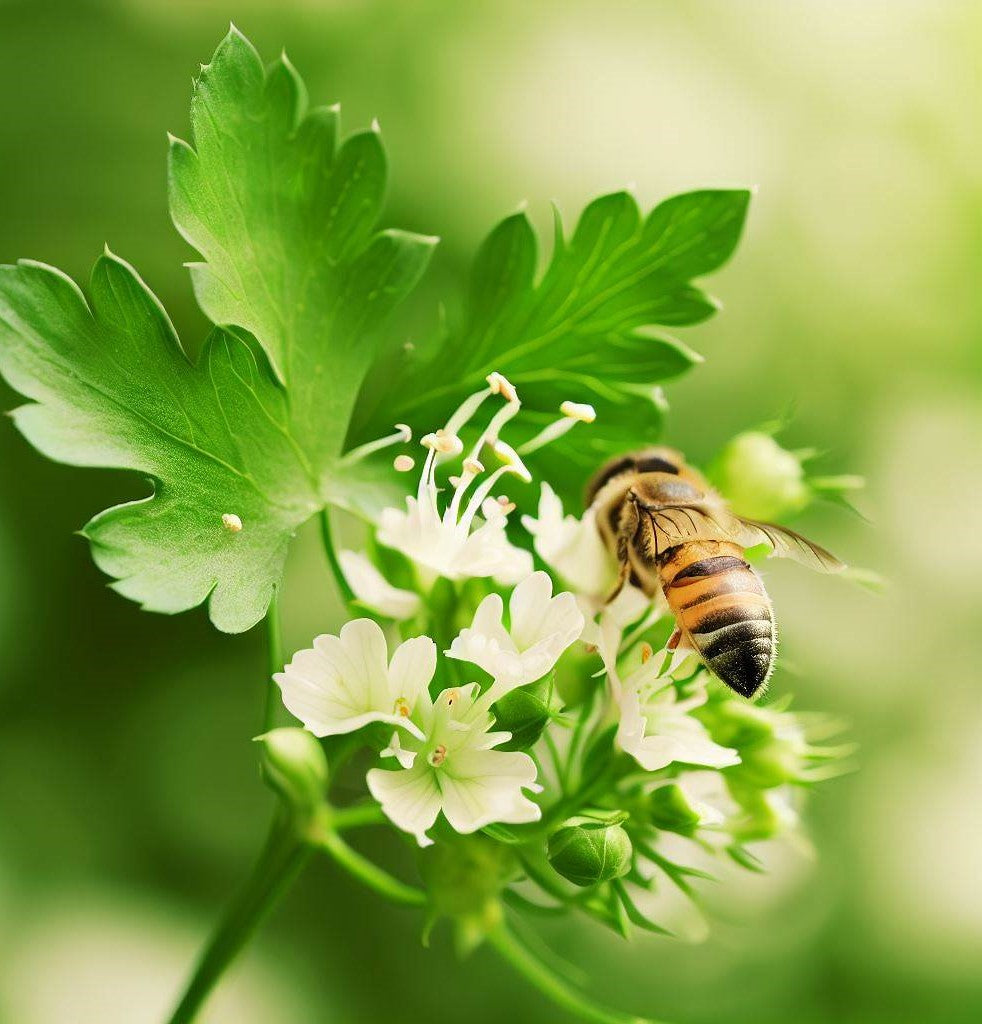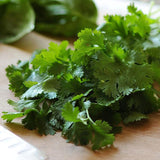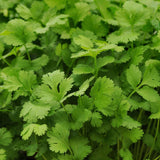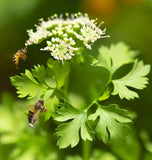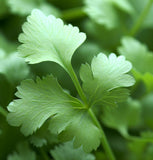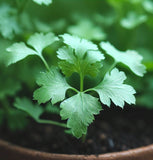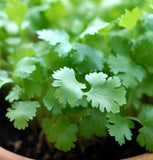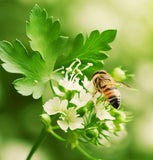Cilantro, Santo (Coriandrum sativum)
Cilantro, Santo (Coriandrum sativum) is a herbaceous annual plant in the Apiaceae family. It is a popular culinary herb known for its distinctive aroma and flavor. Cilantro is native to the Mediterranean region but is now cultivated and used worldwide in various cuisines.
Appearance: Cilantro has delicate, lacy leaves that are bright green and fan-shaped. The plant typically grows to a height of 1 to 2 feet (30 to 60 cm) and produces small white or pink flowers in umbels. The flowers eventually give way to round, ribbed seeds known as coriander.
Flavor and aroma: Cilantro leaves have a fresh, citrusy flavor with a hint of pungency. Some people describe it as tasting slightly soapy or reminiscent of crushed bugs, which is attributed to a genetic predisposition. The leaves are often used as a garnish or added to dishes near the end of the cooking process to preserve their delicate flavor.
Harvesting: Cilantro leaves can be harvested once the plant reaches a height of 4 to 6 inches (10 to 15 cm) and has developed enough foliage. The leaves are best picked in the morning when the essential oils are most concentrated. The seeds, coriander, can be harvested when the plant produces flowers and the seeds turn brown. The seeds are typically harvested by cutting the flower heads and allowing them to dry.
Health benefits: Cilantro leaves are a good source of vitamins A, C, and K, as well as several minerals. It is low in calories and contains antioxidants that may have various health benefits. Some studies suggest that cilantro may help lower blood sugar levels and possess antimicrobial properties. However, more research is needed to fully understand its potential health effects.
Cautions: Some individuals have a genetic predisposition that makes cilantro taste soapy or unpleasant to them. This is known as "cilantro aversion" and is believed to be related to specific olfactory receptors. Additionally, cilantro may cause allergic reactions in some people, particularly those with existing allergies to plants in the Apiaceae family.
Overall, Santo Cilantro is a popular herb valued for its unique flavor and versatility in the kitchen. Whether used as a garnish or as a key ingredient in various dishes, it adds a distinctive freshness and aroma that enhances the overall taste experience.
Botanical name : Coriandrum sativum
Common name : Cilantro, Santo
Life cycle : Annual
Days to maturity : 90-100
Light requirement : Full sun
Planting time : Spring/Summer
Sowing method : Direct sow
Planting depth : ¼”
Plant spacing : 8-10"
Ships : Year-round
Average seed per ounce : Approx. 3,500

